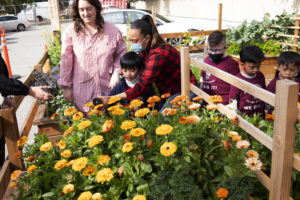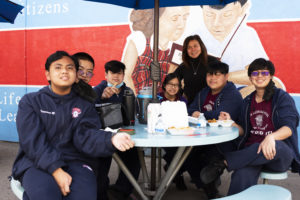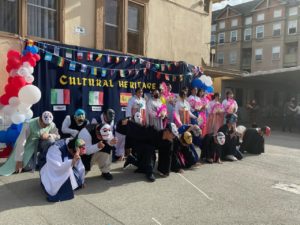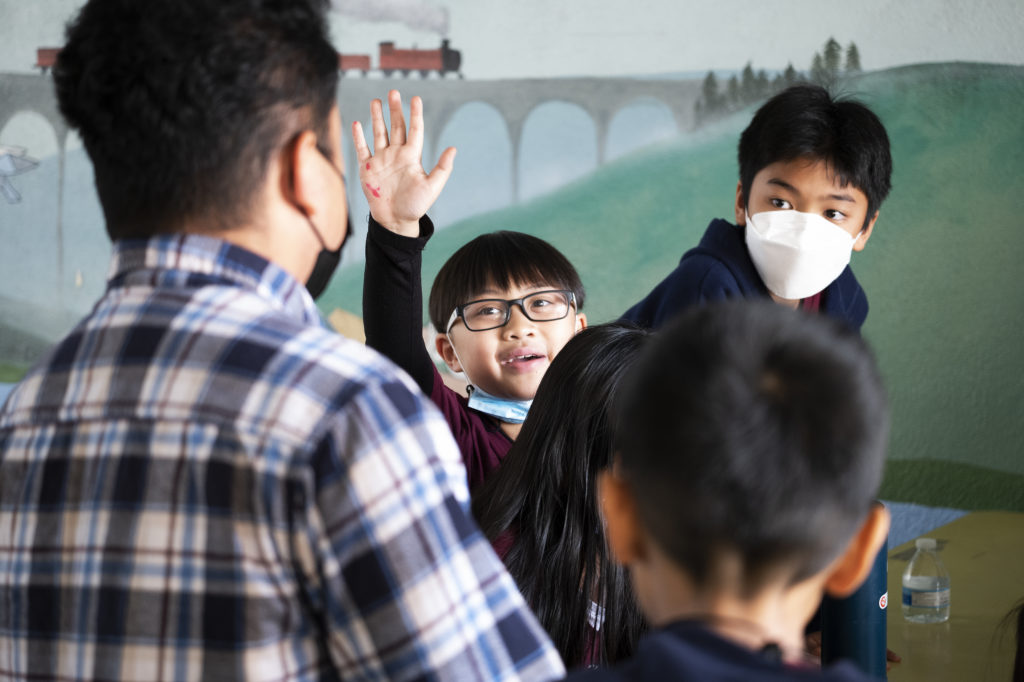When Maria Guillermo first heard about the plan to turn Precious Blood School into a “microschool,” with enrollment capped at around 100, she worried that it was the school’s last gasp, and that her daughters’ learning might be impeded by having two grades share a classroom.
“But I think it’s benefitted them,” she said two years later. Not only do the students have better relationships in their multiage classrooms, but the teachers “tailor the classroom instruction to each individual student.”
The Microschools Network was the inspiration of school officials in the Archdiocese of Los Angeles who saw the children of celebrities paying high prices to send their children to very small schools. These educators believed that they could harness new approaches to online learning developed during the COVID lockdown to make tiny schools affordable and academically excellent.
“We are thrilled to offer families a small-school experience with a highly personalized learning environment,” said Paul M. Escala, senior director and superintendent of schools. “Our Catholic schools have always been known for their community-based approach to education of the whole person. Our Microschools Network takes this to a whole new level.”

So far, three TK-8 schools are participating: Precious Blood in Rampart Village, St. Teresa of Avila in Silver Lake, and St. Athanasius in Long Beach. Enrollment is generally limited to 150 students per school. Specialized staff, such as music, art, and physical education teachers, secretaries, and janitors are shared among the schools. Enrichment programs have been added, including organic gardening and the opportunity to enroll in advanced classes for high school credit.
These school communities don’t suffer enrollment anxiety.
“The principals can breathe a sigh of relief. It gives you a model that will work even if you go down to 80 kids,” said Christina Arellano, director of the Microschools Network, who championed the concept.
“We wanted to be in purposefully small schools, very Christ-centered smaller communities.”
Along with small class sizes, individualized learning is a hallmark as computer learning blends with small group activities. The teachers receive coaching in multiage education and individualized learning through Inclusion Solutions, Inc., and the Greeley Center for Catholic Education at Loyola University in Chicago.
“So they are in class, the teachers are guiding them, but the teachers can give each of them different assignments to work on while they work with another group of students. They don’t have to sit back when they finish and wait until the whole class is ready to move on,” Arellano said.
The families pay the same tuition as at any other Catholic school, but the Microschools Network is supported by benefactors. They do not cover operating costs, only special projects, such as renovating a building, purchasing technology, or creating a school garden.
“If we were just going to pay their bills, then we are not helping them to sustain themselves,” Arellano said. “Tomorrow, if our benefactors had to step away, the school would still thrive.”

Precious Blood had begun combining grade levels as a cost-saving measure several years earlier. The Microschools Network has shown that to be good for education as well as finances.
“Sometimes people look at multiage classrooms as a panic measure because you’re struggling financially. That’s not the case for us,” said Maria Cunanan, the principal at Precious Blood for 11 years. “A multiage classroom is the way to go. We believe that they prepare the students for life. Anything that they do after they leave here, they will be involved with people of all ages.”
Precious Blood has come full circle since the 1950s, when it educated first-generation European immigrants, and had multiage classes because there were only four teaching sisters. Today its families hail from the Philippines, East Asia, and Latin America — heritages that they proudly celebrated with artistic displays of music and dance at the school’s recent International Day.
Cunanan is thrilled that the network allows specialized teachers of music and art.
“Those are usually the first things to go with schools that are financially challenged,” she said. “This has opened up resources for us that we would never have been able to have.”
A ranger from EnrichLA teaches organic gardening, with tasty and colorful results. The students have held farmers markets for their parents, giving away herbs, lettuce, zucchini, and kale.
“The plants are so healthy looking,” said Guillermo, whose daughters are in sixth and eighth grades.
Her girls have benefitted from a new approach to homework, which emphasizes preparing for the next day’s lesson rather than reviewing the last lesson.
“From the results I’ve seen with both my daughters, the test scores have shown it to be very, very effective,” she said.
That is also the experience of Corman Gregorio, whose eighth-grade son Gavin has attended Precious Blood since transitional kindergarten. She has seen a marked improvement in his study habits.
“Now he is much more focused,” she said.
He is among the first Precious Blood students invited to enroll in an online program for high school math credit through Arizona State University. There is no extra charge to the parents.

All of this is creating buzz.
The number of parents who signed up at an enrollment pitch for Precious Blood soared from 25% to 75%, with 100% of last year’s families returning. Standardized test scores are also up, Arellano said.
Prior to the Microschools Network, “I always thought of Precious Blood as ‘The Little Engine That Could,’ ” Guillermo said.
“There’s a whole new energy that it has brought to the school, as far as the academics and being proud of being a smaller-size school. When my son graduated in 2018, I never in my wildest dreams thought that things like this would be possible at Precious Blood.”

